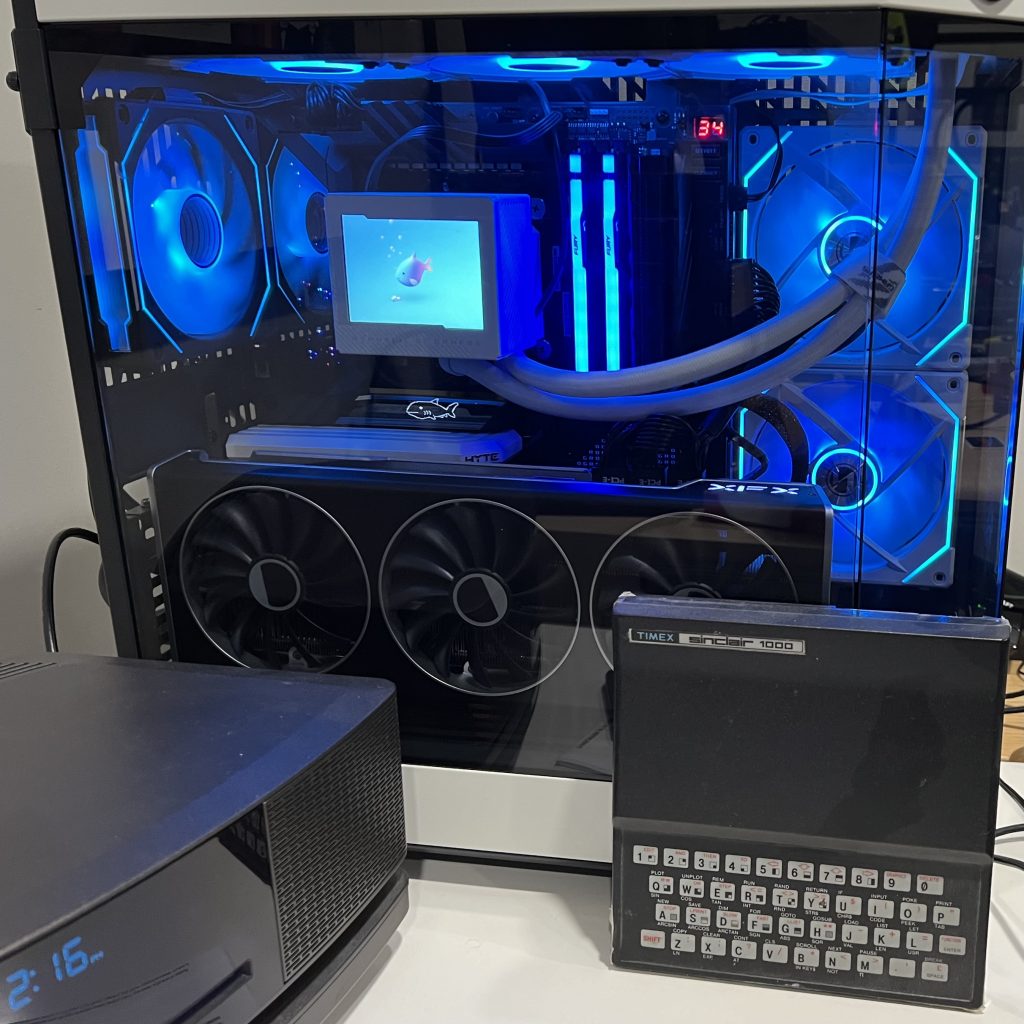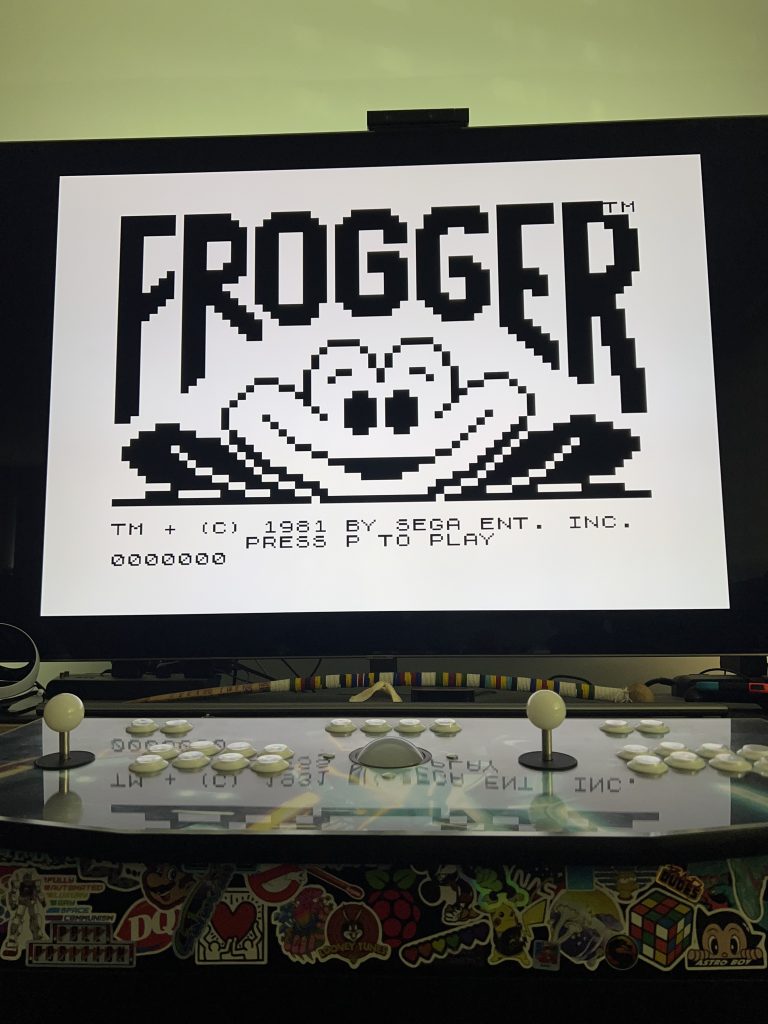This month I celebrate 40 years since I was given my first computer – A Timex Sinclair 1000. I’ve talked about and reminisced about this time period often.

Mum finally agreed to get a computer, so off we went to Consumers Distributing in Mississauga on Dundas St, after piano lessons. It was between a Timex Sinclair 1000 or a Texas Instruments TI99/4a – both being on sale. As history would have it, we bough the Timex Sinclair 1000 for CA$69.99 in 1983 – Today apparently that’s $211.77 adjusted for inflation!
That was a huge purchase back in the day, and it had a massive impact on my life.
Two months later, my Dad bought us a Commodore 64 for Christmas at a Zellers in Guelph complete with a Vic Desk, Monitor and disk drive! It was an amazing setup!
With my parents divorced, we had to keep the Sinclair a secret from Dad out of the irrational fear that he would not buy us the Commodore.
I’m so glad and very fortunate my parents invested in my future though both systems. It’s let me appreciate generations of computers from an early age. I used both a fair but, and we expanded the Sinclair with the thermal printer and a 16k RAM pack so we could play Frogger in black and white. 10 minutes to load from a tape deck!
In 1987, an acquaintance from school gave me his TS/1000 and a bunch of tapes. Both still are here with me, as are the tapes and a tape deck.
The impact of having a computer in my life did several things
- It very much inspired my career – There were several things I wanted to do between becoming a high school Computer Science teacher, to being a software developer that travelled. I ended up doing the latter between software development, being a consultant, management and architecture.
- It became a major hobby – between maximizing my home network, my retrogaming projects and other things, it opened up a whole new world to me, one that I wanted to play a part in.
- It helped drive friendships and connection – Nothing like trading games to create community back then. L33t! 😉
My history of computing goes something like this
- Timex Sinclair 1000
- Commodore 64
- Commodore Amiga 500 – I saved up for this all summer, the graphics were amazing
- AST 486SX Laptop – Which sadly died two years after I bought it, not having used it for a year while I was living the UK
- Commodore Amiga 3000 – This was given to me by a former work colleague and landlord. I took it with me to the UK and used it to emulate a Mac to complete my assignments
- Compaq Presario 4528 – This was my first desktop Intel machine – Pentium II power with MMX! I used this to finish my degree
- PC I had built – I’ve completely forgotten what the specs were for this machine
- Lenovo T-Series laptop
- Apple PowerMac G4 Desktop
- At this point I got indoctrinated into Apple with various Mac laptops – G3, G4, MacBooks, MacBook Pros, MacBook Airs, an Intel-based iMac & MacMinis, and currently with an M1 Mac Mini, and a MacBook Pro
- Various Raspberry Pi Model 3Bs, 4s, 400s, 3As
- Minisforum HX90 – My first desktop PC since around 2003 which I was going to use for my arcade project but ended up not doing so
- Beeline SER5 – I’m using this on my Pinball Machine to drive Pinball FX
- Alienware M15 – AMD Rizen 9 7845 and Nvidia GeForce RTX 4070
- And finally, to celebrate my 40th year of computing, I finally built my own PC with my friend Charles with an AMD Rizen 9 7950X3D and an AMD RX 7900 XTX which is all decked out with LCDs and LED lighting
If I were to include game machines:
- Commodore Amiga CDTV – Do we really consider this a game machine? LOL
- Commodore Amiga CD32
- Nintendo Gameboy Colour
- Nintendo Gamecube
- Nintendo Gameboy Advance SP
- Nintendo 3DS
- Nintendo Wii
- Sony Playstation 3
- Xbox 360
- Sony Playstation 4
- Xbox One
- Sony PlayStation 4 Pro
- Xbox Series X
- Playstation 5
Which gives me pause for thought.
Put my Timex Sinclair 1000 next to my new desktop PC – As a kid, I could not fathom having a computer that could generate the images that we now see in 4K on our computer monitors. My friends and I thought it was going to be an impossible task to emulate an Amiga, yet, today we have small credit-card sized computers that can emulate such a machine many times faster, with a huge amount of ram and storage space, relatively speaking.
At that time in the 80s, I’m not sure we could envision what we have today, even in the 90s. I think, by the 2000s you could see where things were going so the surprises are becoming fewer and fewer.
How many Cray XMPs are on my desktop? 800 MFLOPs versus 563 GFLOP (563000 MFLOPS) – 703 times the processing power!
We’ve come a long way from having to cool super computers the way we did in the 80s to what we have today.
The power of my new desktop, even my laptop, is completely insane!
I do believe one of my Timex Sinclair 1000s still works, the other would need to reconnect the keyboard properly and fix one of the membrane keys. The other challenge is having a TV with an analogue antenna port, which I do have, so I have ways of connecting the computer up to a TV.

This is one of the reasons I believe in retro gaming archives and emulation, so people can experience what it was like using some of these more “primitive” machines which are so important to computing history, inspiring people and getting computers into the home.
I won’t lie that I miss the discussions we would have on the merits of different platforms, specifications, what computer the future should pick but that business had blinders on focusing on Intel 80X86 systems rather than the superior Motorola 680X0 series, what the future should be. We were all idealists back then, and we did have some foresight.
Thing is, that discussion became – Xbox versus Playstation, AMD versus Intel, Windows versus macOS. Where it used to be considerably broader, it always seemed to become two against each other – Commodore versus Atari back in the day.
DOS and Windows did become way more refined like Amiga Workbench and Apple macOS. Platforms are a lot more open. For example could you imagine the Windows Subsystem for Linux to run Linux oriented software on Windows? macOS being built on BSD? I couldn’t have either.
So what is there to get excited about these days, especially given 40 years of system versus system battles? Here is what I’m interested in:
- Miniturization – The fact that a Raspberry Pi running an ARM core can emulate so many machines is, in many respects, mind-blowing. Just how powerful that platform is.
- Efficiency – While my “Fishbowl” is one of the fastest setups you can buy, speed isn’t necessarily everything to me. Doing what I can with efficiency is really neat, which goes hand in hand with miniaturization. Doing all that I can to maximize use of the system. For example, I have a Raspberry Pi server in my home running multiple applications on a single machine – I’m not using an x86-based system for this.
- What’s going on with other platforms? – I like learning and seeing what’s going on in the macOS, Linux and Windows worlds, especially with being away from the Windows world for over 20 years.
There are other things too, but those are the top three.
It’s been an incredible journey of 40 years.
